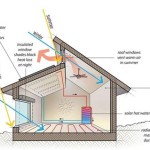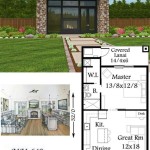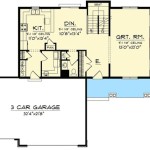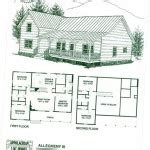A house build plan is a detailed outline that serves as the blueprint for constructing a new house. It encompasses all the essential design elements, materials, and specifications necessary for the successful execution of the project. For instance, a house build plan for a contemporary residence might include a modern open-floor layout, energy-efficient appliances, and a sleek exterior design.
Beyond its primary function as a construction guide, a house build plan also serves as a valuable tool for communication and coordination among the various stakeholders involved in the project. It ensures that architects, engineers, contractors, and homeowners are all in agreement on the intended outcome and can work together seamlessly to bring the vision to life.
In the following sections, we will delve deeper into the key components of a house build plan, its benefits, and the overall process of creating and executing a successful plan.
A well-crafted house build plan is crucial for the success of any construction project. Here are 10 important points to consider when creating a house build plan:
- Define project goals
- Secure necessary permits
- Establish a budget
- Hire a qualified architect
- Choose a suitable design
- Select appropriate materials
- Plan for energy efficiency
- Consider future expansion
- Address environmental factors
- Ensure proper drainage
By addressing these key points, homeowners can lay the foundation for a successful and rewarding house build project.
Define project goals
The first step in creating a house build plan is to clearly define your project goals. This involves determining the purpose of the new house, the desired size and layout, and any specific features or amenities you want to include. It’s also important to consider your budget and timeline for the project.
- Determine the purpose of the house: Are you building a primary residence, a vacation home, or an investment property? Each type of house will have different requirements in terms of size, layout, and amenities.
- Establish the desired size and layout: How many bedrooms and bathrooms do you need? Do you want an open floor plan or a more traditional layout? Consider your lifestyle and future needs when determining the size and layout of your new home.
- Identify specific features and amenities: Make a list of any specific features or amenities you want to include in your new home, such as a gourmet kitchen, a home theater, or a swimming pool. Keep in mind that these features will impact the cost and complexity of the project.
- Set a budget and timeline: Determine how much you can afford to spend on your new home and how long you want the project to take. These factors will influence the size, complexity, and features of your new home.
Once you have defined your project goals, you can begin to develop a detailed house build plan that will outline the specific steps involved in bringing your vision to life.
Secure necessary permits
Once you have defined your project goals and hired a qualified architect, the next step is to secure the necessary permits for your house build project. Building permits are required by most municipalities in order to ensure that your project meets local building codes and zoning regulations. The specific permits you need will vary depending on the location and scope of your project, but may include:
- Building permit
- Electrical permit
- Plumbing permit
- Mechanical permit
- Zoning permit
To obtain the necessary permits, you will need to submit a set of plans and specifications to your local building department. These plans will need to be reviewed and approved by the building department before you can begin construction. The review process can take several weeks or even months, so it is important to start the permitting process early.
In addition to building permits, you may also need to obtain permits from other agencies, such as the fire department, the health department, and the environmental protection agency. These permits may be required for specific features of your project, such as a fireplace, septic system, or solar panels.
The process of securing the necessary permits can be complex and time-consuming. However, it is important to obtain all of the required permits before you begin construction. Building without a permit can result in fines, delays, and even legal action.
By following these steps, you can help to ensure that your house build project is completed safely and in compliance with all applicable laws and regulations.
Establish a budget
One of the most important aspects of any house build project is establishing a realistic budget. This involves determining how much you can afford to spend on your new home and allocating those funds wisely. To establish a budget, you will need to consider the following factors:
- Land costs: The cost of land will vary depending on the location and size of the lot. In general, land in urban areas is more expensive than land in rural areas. You will also need to factor in the cost of site preparation, such as clearing the land and installing utilities.
- Construction costs: The cost of construction will vary depending on the size, complexity, and features of your new home. A larger home with more complex features will cost more to build than a smaller home with simpler features. You will also need to factor in the cost of materials, labor, and permits.
- Other costs: In addition to land and construction costs, you will also need to factor in other costs, such as architectural fees, engineering fees, and landscaping costs. These costs can add up quickly, so it is important to budget for them accordingly.
Once you have considered all of these factors, you can begin to develop a realistic budget for your house build project. It is important to be realistic about your budget and to avoid overspending. If you do not have enough money to cover the cost of your project, you may need to scale back your plans or find additional sources of financing.
There are a number of ways to finance a house build project. You can use your own savings, take out a construction loan, or get a mortgage. The best financing option for you will depend on your financial situation and the specific details of your project.
Once you have secured financing, you can begin the process of building your new home. It is important to stay within your budget and to make sure that all of the work is done to a high standard. By following these tips, you can help to ensure that your house build project is a success.
Establishing a realistic budget is essential for any successful house build project. By considering all of the factors involved and by being realistic about your financial situation, you can avoid overspending and ensure that your project is completed on time and within budget.
Hire a qualified architect
One of the most important decisions you will make during the house build process is hiring a qualified architect. An architect will work with you to design your new home and ensure that it meets your needs and budget. Here are four reasons why you should hire a qualified architect:
- Expertise and experience: Architects have the expertise and experience to design homes that are both beautiful and functional. They will work with you to create a design that meets your specific needs and budget.
- Attention to detail: Architects pay attention to every detail of your home’s design, from the overall layout to the smallest finishes. This ensures that your home is built to the highest standards of quality.
- Code compliance: Architects are familiar with all of the building codes and regulations that apply to your project. This ensures that your home is built in compliance with all applicable laws.
- Project management: Architects can help you manage your project from start to finish. They will work with you to develop a realistic budget and timeline, and they will coordinate with the contractors to ensure that your project is completed on time and within budget.
Hiring a qualified architect is an investment in the future of your home. A well-designed home will be more comfortable, more efficient, and more valuable than a home that was not designed by a professional. If you are planning to build a new home, be sure to hire a qualified architect to help you create the home of your dreams.
Choose a suitable design
Once you have hired an architect, the next step is to choose a suitable design for your new home. There are many different types of homes to choose from, so it is important to do your research and find a design that meets your needs and lifestyle.
- Consider your lifestyle: The design of your home should reflect your lifestyle and needs. If you enjoy entertaining, you may want to choose a home with a large open floor plan and a spacious kitchen. If you have a large family, you may want to choose a home with multiple bedrooms and bathrooms.
- Think about the future: When choosing a design for your home, it is important to think about the future. Consider how your needs may change over time. For example, if you are planning to have children, you may want to choose a home with a large backyard and a playroom.
- Consider your budget: The cost of building your home will vary depending on the design you choose. It is important to set a realistic budget and choose a design that fits within your financial constraints.
- Get inspiration from other homes: One of the best ways to choose a design for your home is to look at other homes that have been built in your area. This will give you a good idea of what is possible and what is popular in your area.
Choosing a suitable design for your new home is an important decision. By taking the time to consider your needs and lifestyle, you can choose a design that you will love for years to come.
Select appropriate materials
The materials you choose for your house build project will have a significant impact on the cost, durability, and overall quality of your home. It is important to select materials that are appropriate for your climate, your budget, and your desired aesthetic. Here are some factors to consider when selecting materials for your house build project:
Climate: The climate in your area will play a major role in determining the materials you choose for your home. For example, if you live in a cold climate, you will need to choose materials that are well-insulated and can withstand extreme temperatures. If you live in a humid climate, you will need to choose materials that are resistant to moisture and mold.
Budget: The cost of materials will vary depending on the type of material, the quality of the material, and the availability of the material in your area. It is important to set a realistic budget for your project and to choose materials that fit within your budget. You may also want to consider the long-term cost of the materials, such as the cost of maintenance and repairs.
Desired aesthetic: The materials you choose for your home will also have a significant impact on the overall aesthetic of your home. For example, if you want a modern home, you may want to choose materials such as glass, steel, and concrete. If you want a more traditional home, you may want to choose materials such as brick, wood, and stone.
By considering all of these factors, you can choose the appropriate materials for your house build project and create a home that meets your needs and desires.
Plan for energy efficiency
In today’s world, it is more important than ever to build energy-efficient homes. Energy-efficient homes use less energy to heat and cool, which can save you money on your utility bills and reduce your carbon footprint. There are many different ways to make your home more energy-efficient, including:
- Insulate your home: Insulation is one of the most important factors in energy efficiency. It helps to keep your home warm in the winter and cool in the summer, reducing the amount of energy you need to heat and cool your home.
- Use energy-efficient windows and doors: Windows and doors are another major source of heat loss. By choosing energy-efficient windows and doors, you can reduce the amount of heat that escapes from your home in the winter and the amount of heat that enters your home in the summer.
- Install a programmable thermostat: A programmable thermostat can help you save energy by automatically adjusting the temperature in your home when you are away or asleep. This can help to reduce the amount of energy you use to heat and cool your home.
- Use energy-efficient appliances: Energy-efficient appliances use less energy to operate, which can save you money on your utility bills. When purchasing new appliances, look for the Energy Star label, which indicates that the appliance meets certain energy-efficiency standards.
By following these tips, you can build an energy-efficient home that will save you money on your utility bills and reduce your carbon footprint.
Consider future expansion
If you think you may want to expand your home in the future, it is important to consider this when creating your house build plan. By planning for future expansion, you can make it easier and less expensive to add on to your home later on. Here are four things to consider when planning for future expansion:
- Choose a flexible design: When choosing a design for your home, look for one that can be easily expanded in the future. For example, a home with a modular design can be easily added on to, as can a home with a simple rectangular shape. Avoid homes with complex or irregular shapes, as these can be more difficult to expand.
- Leave room for expansion: When planning the layout of your home, be sure to leave room for future expansion. For example, you may want to leave space for an additional bedroom or bathroom, or you may want to leave space for a future family room or sunroom. It is also important to leave enough space around your home for future additions, such as a deck or patio.
- Consider the location of utilities: When planning the location of utilities in your home, be sure to consider future expansion. For example, you may want to locate the electrical panel and plumbing in a central location so that it is easy to access if you need to add on to your home in the future. You may also want to consider installing additional electrical and plumbing lines in areas where you may want to add on to your home in the future.
- Get permits for future expansion: If you think you may want to expand your home in the future, it is a good idea to get permits for the expansion now. This will save you time and money in the future, and it will also ensure that your expansion is done in accordance with all applicable building codes.
By considering these factors when creating your house build plan, you can make it easier and less expensive to expand your home in the future.
Address environmental factors
When creating your house build plan, it is important to consider the environmental impact of your home. By taking steps to reduce your home’s environmental impact, you can help to protect the planet and save money on your energy bills.
- Choose sustainable materials: When choosing materials for your home, look for sustainable materials that are produced in an environmentally friendly way and have a low environmental impact. For example, you may want to choose recycled materials, renewable materials, or materials that are produced locally.
- Design your home to be energy-efficient: An energy-efficient home uses less energy to heat and cool, which can save you money on your energy bills and reduce your carbon footprint. There are many different ways to make your home more energy-efficient, such as insulating your home, using energy-efficient windows and doors, and installing a programmable thermostat.
- Install renewable energy systems: Renewable energy systems, such as solar panels and wind turbines, can help you to generate your own energy and reduce your reliance on fossil fuels. Installing renewable energy systems can be a significant investment, but it can save you money on your energy bills in the long run and help to reduce your carbon footprint.
- Consider the impact of your home on the local ecosystem: When choosing a location for your home, consider the impact of your home on the local ecosystem. Avoid building in areas that are environmentally sensitive, such as wetlands or forests. You may also want to consider planting native plants around your home, which can help to attract wildlife and support the local ecosystem.
By considering these factors when creating your house build plan, you can help to reduce the environmental impact of your home and create a more sustainable home for yourself and your family.
Ensure proper drainage
Proper drainage is essential for any house build project. It helps to prevent water from accumulating around your home, which can lead to flooding, foundation damage, and other problems. There are a number of things you can do to ensure proper drainage around your home, including:
- Grading the land: The land around your home should be graded so that water flows away from the foundation. This can be done by sloping the land away from the house, or by installing a drainage system.
- Installing gutters and downspouts: Gutters and downspouts help to collect rainwater from your roof and direct it away from your home. Be sure to install gutters and downspouts on all sides of your home, and make sure that they are properly sized and installed.
- Installing a drainage system: A drainage system can help to collect and redirect water away from your home. There are a variety of different drainage systems available, so be sure to choose one that is appropriate for your home and your budget.
- Planting trees and shrubs: Trees and shrubs can help to absorb water from the ground and reduce the amount of water that runs off into your yard. Be sure to plant trees and shrubs around your home, but avoid planting them too close to the foundation.
By following these tips, you can help to ensure proper drainage around your home and protect your home from water damage.









Related Posts








